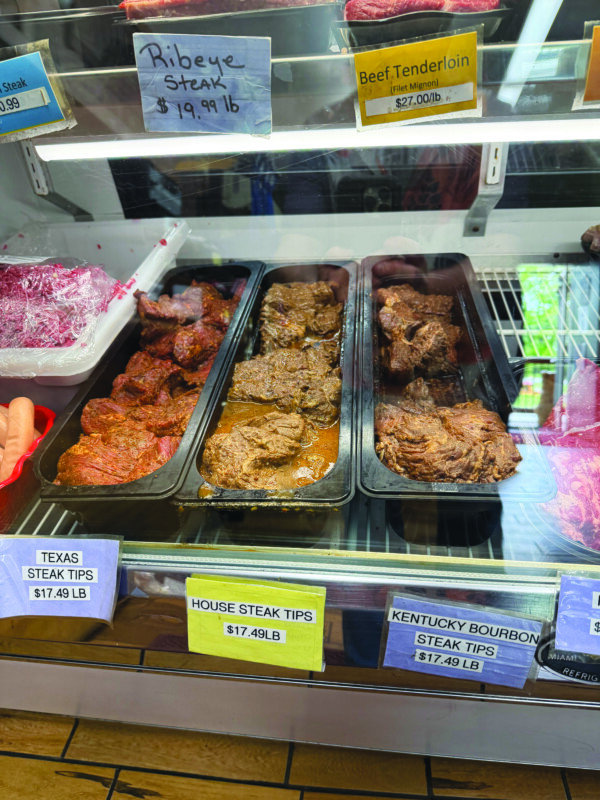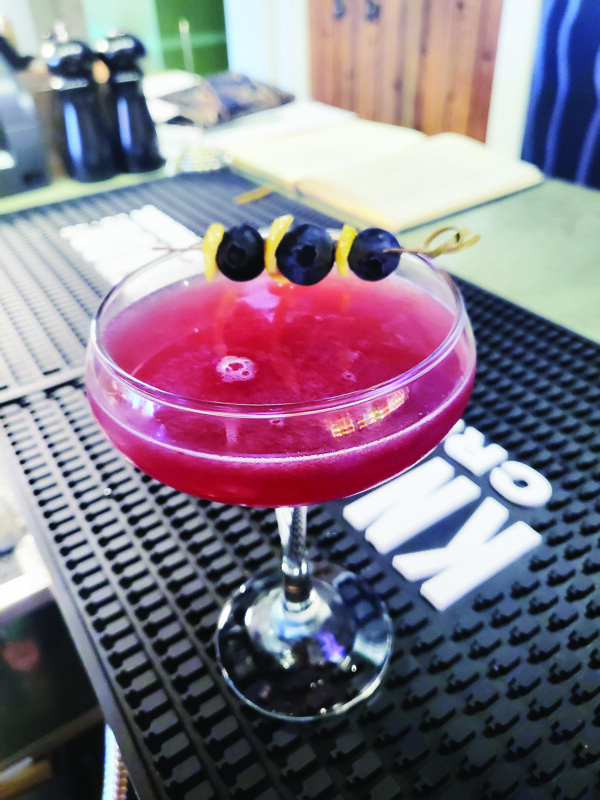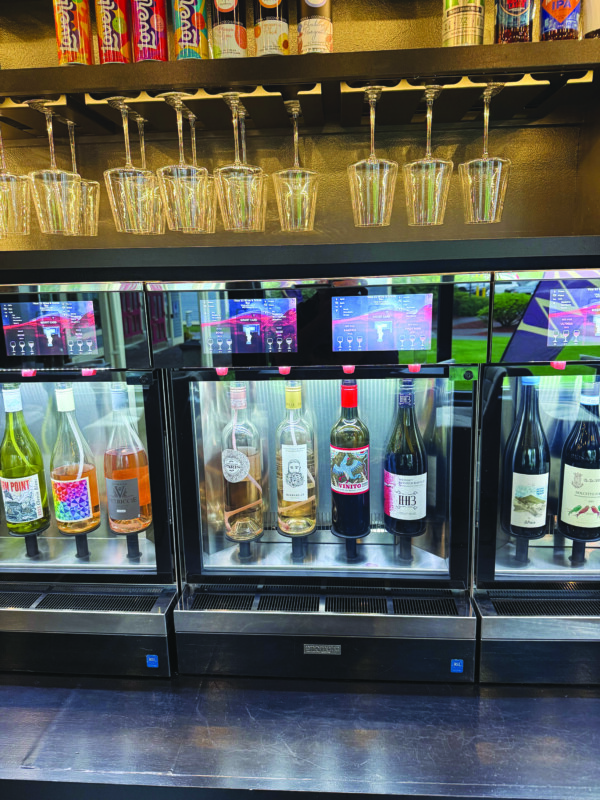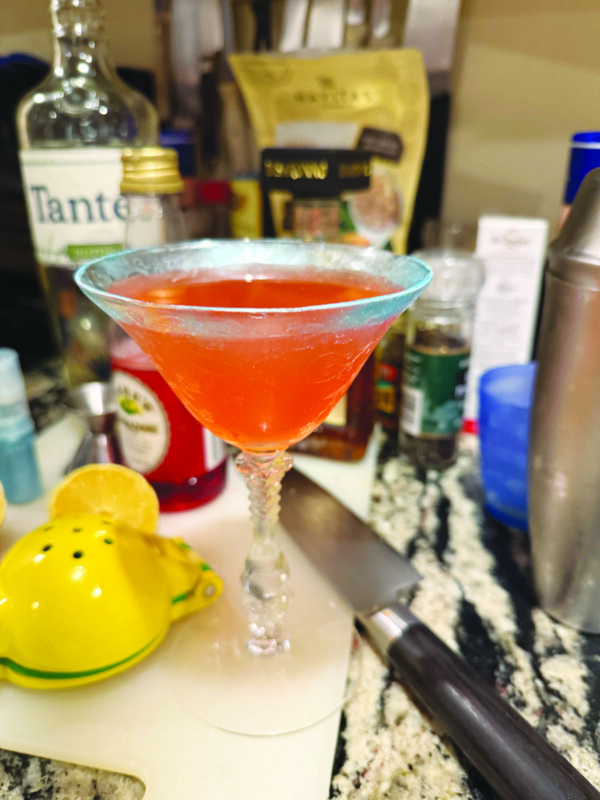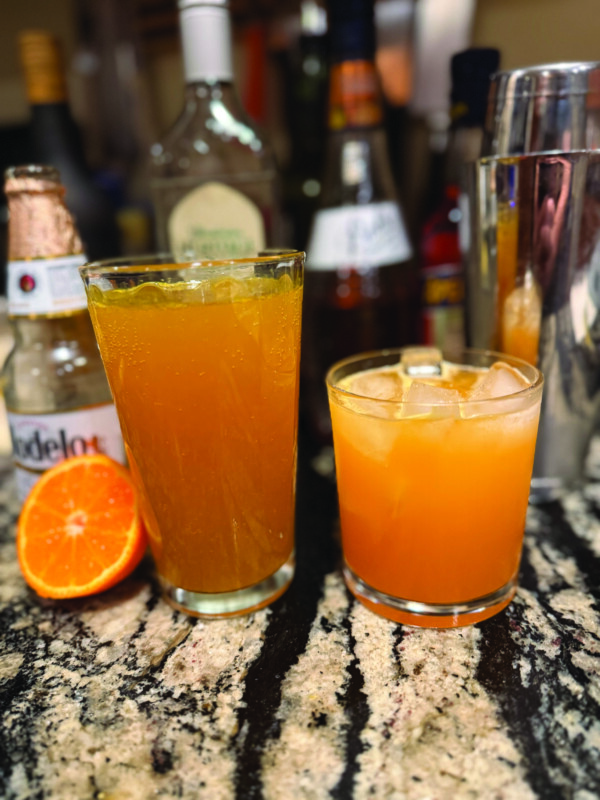Advice on what to cook tonight
There are significant differences between the terms “grilling” and “barbecuing.”
It has to do largely with what kind of meat you are cooking. If it is a tender, juicy cut of beef, for instance, you will probably want to grill it — cook it quickly, over fairly high heat.
Dan DeSouci is the owner of the Up in Your Grill Food Truck (493-3191, upinyourgrill.com) and a competitive griller. Barbecuing, he said, is something very different.
“Classic Southern barbecue is low and slow, typically,” he said. “There are other methods — hot and fast methods — but typically, it’s low and slow. And it’s usually the bigger and tougher meats. Originally, these larger cuts — like say a pork butt or brisket — if you try to cook them on a grill they usually come out very tough. If you cook it low and slow in a smoker or really any low and slow method, it’s going to break down all the fat and connective tissue. The meats are just going to kind of stew their own juices and become very, very tender. That’s the goal of barbecue.”
And then there’s grilling, he said.
“Grilling is hot and fast where [the meat is] direct over fire — like steak or a pork chop, any kind of chop, fish filets or something you want to expose to high heat. That’s grilling. I have trophies for grilling, so I have opinions about this. My nickname is actually Grill Man Dan.”
One of the most popular grilling techniques in recent years, DeSouci said, is something called a “reverse sear.”
“So there’s direct searing,” he explained. “An easy example is that you take a New York sirloin strip steak, right? You put it on the grill. You put it directly on the fire, you’re just grilling it, right? Put it on there, you get some grill marks, then put it over indirect heat until it cooks to the temperature you like, and it’s wonderful. But there’s some people who swear by what’s called the reverse sear. They’ll put [a steak] over the cold zone of the grill, close the top, let it cook a little bit. When it’s cooked to the temperature they want, they open the top and put it onto the direct heat, get those grill marks and finish it really fast.”
There are any number of steaks that are well-known for how well they grill — T-bones, porterhouses and rib-eyes come to mind — but it’s easy to focus on those and miss out on a world of things to grill.
One category of meat that gets overlooked for the grill, DeSouci said, is fish.
”I actually love trout,” he said. “You can cook trout with the skin on, which helps it hold together better. You can grill right on the grill with the skin, but a lot of people [use] fish baskets for the flakier fish.” These are the black steet baskets you find where you buy grilling equipment, he explained, the ones with lots of medium-sized holes in them. “You can do like what some folks will do,” DeSouci continued, “steaks like a tuna steak or a swordfish steak — a firmer fish. You can even grill salmon steaks that are cut the other way [cut the long way, with the grain of the flesh, giving the fish a firmer texture]. Those are going to hold up better to direct grilling and direct heat, whereas with flakier fish you’re better off in a basket.”
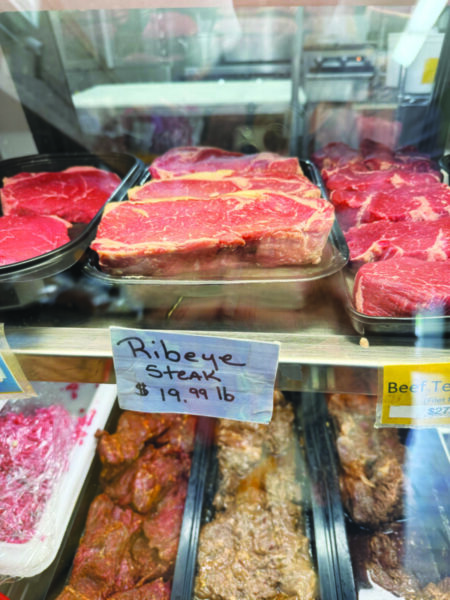
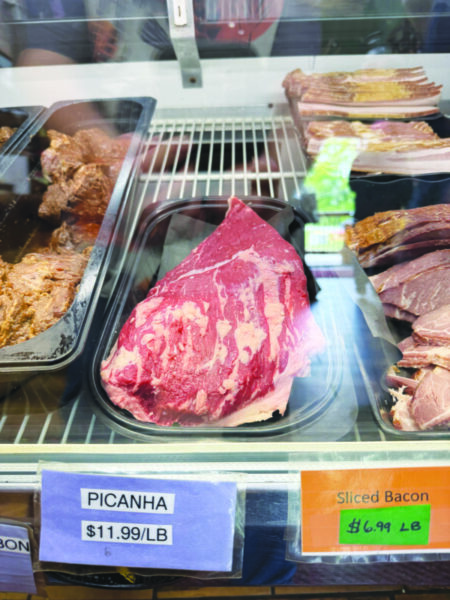
Home grillers don’t necessarily have to invest in special equipment to begin with, DeSouci said. “There are other tricks too,” he said. “There are some wonderful recipes out there where you put everything in some foil and wrap it. So you’ll put something like a cod fillet, some lemon in there and some herbs, and a little bit of oil, and then you wrap it up in the foil and put it on the grill and flip it a few times and take it off the grill. It comes out wonderful.”
When he’s at home, DeSouci loves to grill pork.
“I can’t get enough of pork chops,” he said. “Chicken and pork are going to be a lot cheaper than beef or fish. And the best chops have a little bit of the tenderloin on them. In most grocery stores, it’s just going to be called something like ‘center cut pork chop.’ Look for the ones that are almost like a T-bone steak where on one part you have the pork sirloin and on the other part you have the pork tenderloin, which is very, very tender.”
Jay Beland is a butcher at Lemay and Sons Beef in Goffstown. He is a big proponent of grilling sausages.
“It’s a great way to cook,” Beland said. “Do a sausage. It’s an easy thing to do. You pretty much just put it on the grill, usually for 10, 15 minutes at most, and you get a great turnout on pretty much any of the sausages we make — everything from sweet Italian sausages to Chinese to garlic and cheese.”
The key, Beland said, is to watch your sausages carefully.
“Grilling,” he said, “versus any other way of cooking, gives you more of that char-type flavor to the surface of what you’re cooking. Plus, the thing to be careful of when you’re grilling sausages is not to grill it at a high temperature because it creates scorching. And if your sausage has a natural casing, it may not be as resilient to the heat like it would be if it was an artificial casing. So low and slower may be more preferred when it comes to grilling a sausage. So when you’ve got different [heat] zones over the coals, you cook it out toward the outside where it’s a little cooler. It’s not like a steak where a steak can take the heat, you sear it, and then you move it to a lower temperature so then you finish cooking it. What you want to do with a sausage is more of a slow, even cook, all the way through.”
Beland and the other butchers at LeMay and Sons enjoy grilling with gas grills, as well as over charcoal, but are emphatic about what type of charcoal to use. “LUMP!” they said in unison when asked. Lump charcoal is made from chunks of wood that have been carbonized in a low-oxygen environment. Many grillers like the quality of the heat they get from it.
Shop manager Rick LeMay explained his opinion about the difference in quality between lump charcoal and briquettes.
“The problem with a lot of charcoals today,” he said, “is you’ve got manmade, artificial stuff. They try to simulate what our parents or ancestors used to do when it came to burning wood, but that was cooking with wood coal, versus an artificial [briquette] that somebody’s decided to make something out of something else. Why can’t you use charcoal that looks like charcoal? I got my neighbor going with lump charcoal. It’s more like cooking with wood.”
“Plus,” LeMay added, “with charcoal, you can always inject some smoke. You know, put a little piece of hickory in there. If you want lighter, go apple. You can always inject a little smoke flavor.”
LeMay particularly likes the versatility of flank steak.
“It’s a more grainy, textured steak, like steak tips would be,” he said. “It’s what’s used in a Chinese restaurant when you get steak on a stick, the teriyaki steak, if you will. It can be sliced thin. You could use it for fajitas. Or you can slice it a little thicker. You can dry rub it. You can grill it openly, as a whole piece. It’s not very thick, but it’s like a sheet of paper in such a way where you can grill both sides. You sear it, you leave the inside medium to rare, and then you slice it afterward, after letting it rest for a bit, like any beef cut, and then you can slice it paper thin like a shaved steak, or you can slice a little bit thicker like a fajita or you can slice a little bit thicker than that like a steak tip.”
LeMay said it’s important to remember to slice any beef — especially something like flank steak, which has a lot of texture — against the grain of the muscle fibers. “Otherwise,” he said, “you’re dealing with jerky. It’s a great thing to do for the in-laws if you don’t want them to come back.”
Another cut of beef that has been growing in popularity is one called “picana,” which comes from the hip of a steer.
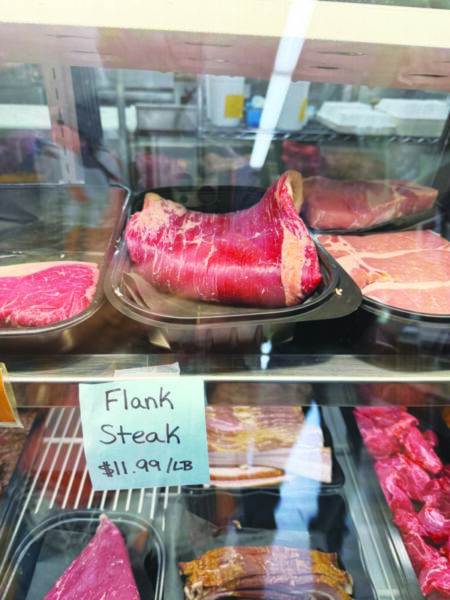
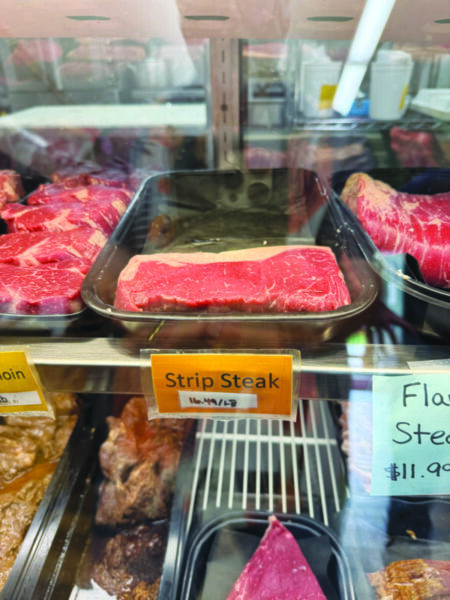
“It’s part of the sirloin,” LeMay said. “You won’t see it for sale up here in the Northeast much, because it’s more of a southwestern item. The pincana is comparable to a sirloin steak in its texture, but it has a nice fat cap on it. It has some marbling, but it’s not intense like a rib-eye. It’s a tender piece of meat that has a pretty good flavor to it for its price point. It’s commonly done as a whole piece. It’s not a large piece. It’s usually three pounds or less as an entirety. So it allows you to cook a whole muscle on the grill or the smoker without having a significant poundage for a family where you can smoke that and slice it and have it for a meal rather than doing something that would be significantly [larger] in size like a 10-pound sirloin.”
Lemay said home grillers should not be afraid of a little fat on their beef.
“The marbling on a steak is good,” he said, “because it’s forgiving. If someone overcooks it, it will still be tender if it’s got enough fat. That’s why steak tips are popular with a lot of people, because they are pretty much foolproof for grilling.”
Some hobbyist grillers are experimenting to find ways of cooking “low and slow” with their grills, LeMay said.
“Can you use your grill as a smoker?” he asked. “You can. It takes a little bit more effort to do so, but it’s possible. More people nowadays are turning their charcoal grills into smokers. My neighbor, he’s got a Weber kettle [grill]. He lights the lump coal in the back, puts the wood [for smoking] on one side, and then just lets it smolder and puts all this food on the side where [the heat] is indirect.”
Keith Sarasin, the head chef and owner of The Farmer’s Dinner (thefarmersdinner.com) pop-up restaurant, is the author of Meat: The Ultimate Cookbook (2021, Cider Mill Press). He said a home cook should use whatever type of grill makes their life easier.
“Really what I’m looking for,” he said, “is something easy. I think a lot of times people associate cooking with this laborious task, and grilling should be fun. Propane is obviously really great. If you’re looking at two-zone cooking, with one side for hot searing and the other for cooling and finishing, propane has a more regulated heat. It allows you to regulate and keep a consistent temp. It’s one of the reasons it’s been so popular throughout all the years.”
“Charcoal will give you kind of that more backyard barbecue taste,” Sarasin said, “as opposed to propane. It’s delicious and it’s a great medium and I cook on it a lot. But when you’re starting to [experiment with] woods and charcoals, you’re dealing with a tremendous amount of fluctuation in temperature.”
“There are a number of things that I like to consider when I’m looking for a charcoal grill,” Sarasin continued. “First and foremost is airflow. I need adjustable vents on both the intake and exhaust for that. That gives me control over the temperature. The better the control, the easier it is to go low and slow or hot and fast, depending on what you need. The other thing that I’m looking for is a coal management system. Basically, I’ll look for, ‘How easily can I move these coals around? Is there a charcoal grate that allows for indirect and direct zones?’”
Sarasin admitted that charcoal grills involve a certain amount of maintenance: “I think cleaning and ash removal is a really important thing. A lot of people don’t clean their grills properly. They’ll do an entire summer of grilling and they’ll never empty the coal pan or the ash tray, so you get all this buildup, and that’s one of the things that contributes a lot to fires.”
As a griller gains experience and gets more confident, Sarasin said, a natural next step is to play around with different woods that produce different levels and flavors of smoke.
“As you start to get into woods, that’s when things go very, very different,” he said. “I’d start with applewood because it’s something that we have an abundance of because of the farms here. And applewood has a very sweet and mild taste to it. It is fantastic for poultry and for veggies. I smoke with applewood quite a bit.”
“If you’re starting to get into brisket and ribs and all of those things,” Sarasin said, “you can go a couple of ways. In Texas they use post oak because it’s literally the greatest wood for smoking brisket. Hickory and mesquite also work really, really well. Then you have things like pecan and maple woods. Those are really good for poultry as well. I like maple and salmon and anything delicate because it does give a sweet and subtle flavor to it, as opposed to mesquite, which is very earthy and sharp.
Chef Sarasin said that when he grills at home he defaults to a particular cut of beef.
“For grilling,” he said, “I am a huge fan of just flap steak. The reason I like it is because flap has a lot of wonderful marbleization to it. It’s not too tough. It works wonderfully for steak tips. And we’re a New England culture, and steak tips are part of our New England culture. Steak tips are part of our backbone and DNA.”
“I think that’s what I’m going to do for dinner tonight,” he said after a moment of reflection.
Featured photo. Steak tips. Photo by John Fladd.

